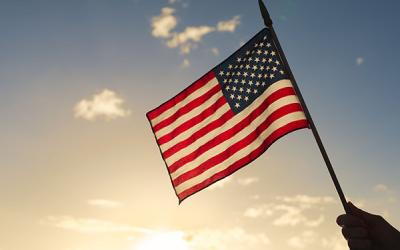
Sgt. Edward Younger walked among the coffins. Carrying a handful of white roses, he circled the four unknown soldiers until he stopped at one of the coffins, laying the roses on top. It was September 1921, and Sgt Younger had just selected the first of the American Unknown Soldiers.
All this started as an idea of the British and French governments. Recognizing the tremendous sacrifices of WWI, they decided to honor and commemorate their unknown dead. The United States wasn’t so sure of all this as our War Department was reluctant to concede that some of our wartime dead would remain unidentified. As time went on, the decision was taken to follow the lead of England and France and select an unknown American soldier for a memorial in Washington, D.C at Arlington National Cemetery.
The War Department ordered the Quartermaster Corp to select unknowns from four French cemeteries, and each grave registration was thoroughly researched to determine if there was any possibility of establishing an identity. Once it was established that no possibility existed, the process got underway.
A highly decorated enlisted man, Sgt. Younger was chosen to select the remains. The four coffins were taken to Chalons-sur-Marne for the selection. Before Younger saw the coffins, French authorities rearranged them to assure that not even the burial place could be determined by Younger. Sgt. Younger walked among them, finally stopping and placing the white roses on one coffin.
That unknown was brought to the United States, arriving in Washington on November 9, 1921, where he would lie in state in the US Capitol Rotunda. The military procession on November 11, Armistice Day of 1921, was immense. At the Arlington Memorial Amphitheater, President Warren G. Harding delivered an address to 5,000 people. The unknown was awarded the US Medal of Honor and, on behalf of King George V, the British Victoria Cross.
The war’s most obscure victim was buried by some of the war’s most powerful decision makers. Various dignitaries, including General of the Armies John J. Pershing, laid a wreath. In an unusual tribute for 1921, Plenty Coups, Chief of the Crow Nation, laid his own war bonnet and coup stick at the tomb.
The Tomb of the Unknown Soldier would continue to collect unknown Americans in the wars that followed. The tradition, protocol, and pageantry associated with Memorial Day at the Tomb of the Unknown Soldier as we know it was adapted from a custom practiced in the South to honor war graves. Picked up by former US Army General John Logan as a way to honor all American war dead, he pushed for a national commemoration.
The idea grew rapidly. By 1890, Decoration Day was a holiday in every state. In 1964, the name was changed to Memorial Day, and in 1968, observance was moved to the last Monday in May. It became a federal holiday in 1971 and is now another long holiday weekend for us.
Lt. James Timothy, US Army, first Tennessean killed in WW1
Davidson County Wills and Inventories, Charles E. Perry, 1930
Davidson County Wills and Inventories, Dan R. Cockrill, 1942
However, in all of this, remember that Memorial Day is for those who died in defense of the United States. In the busy Memorial Day weekend of loud, obnoxious commercials and holiday family fun, pause to remember. Just one minute to honor all those who fell in all our nation's wars. It’s a pittance of time.




